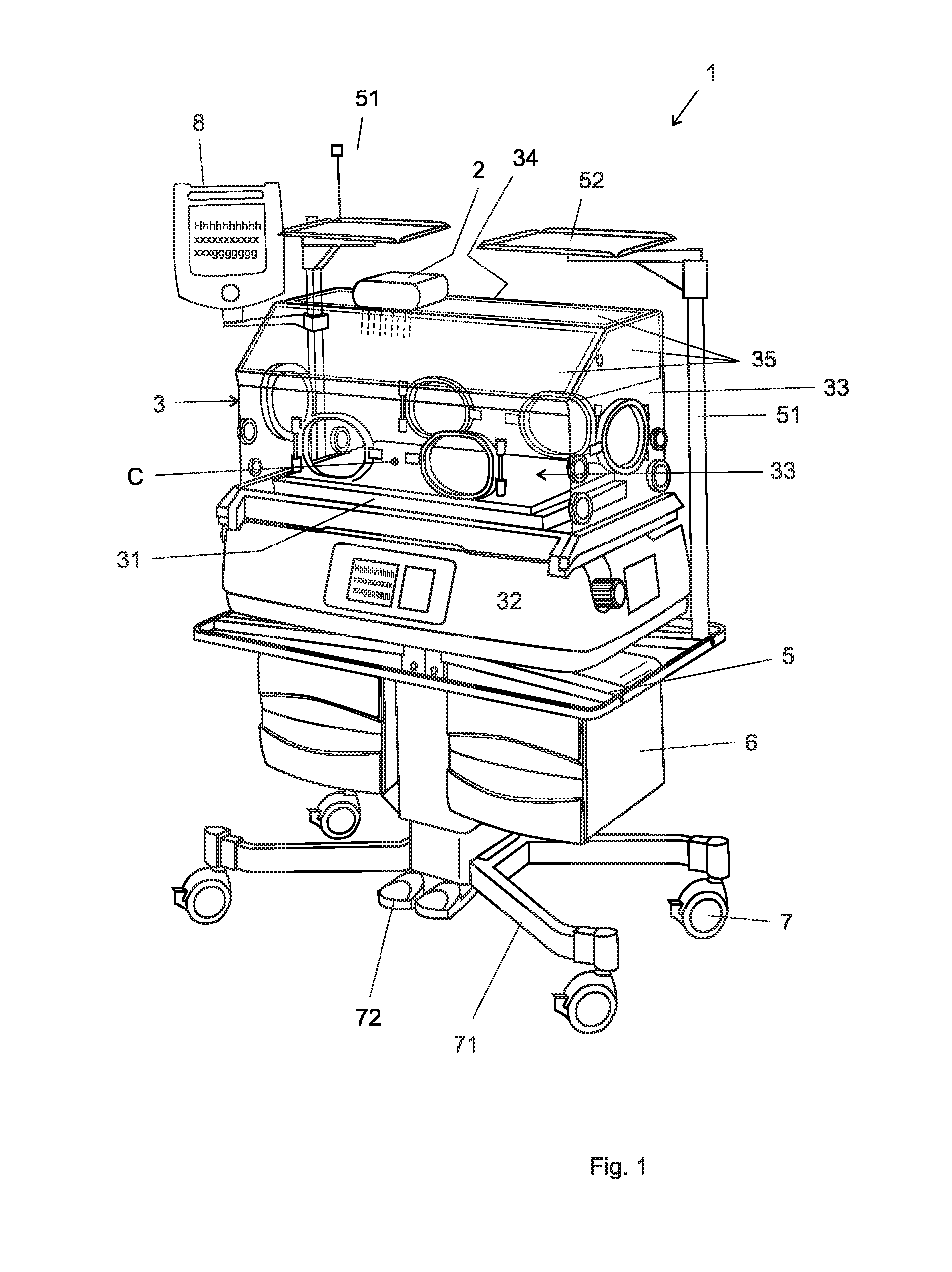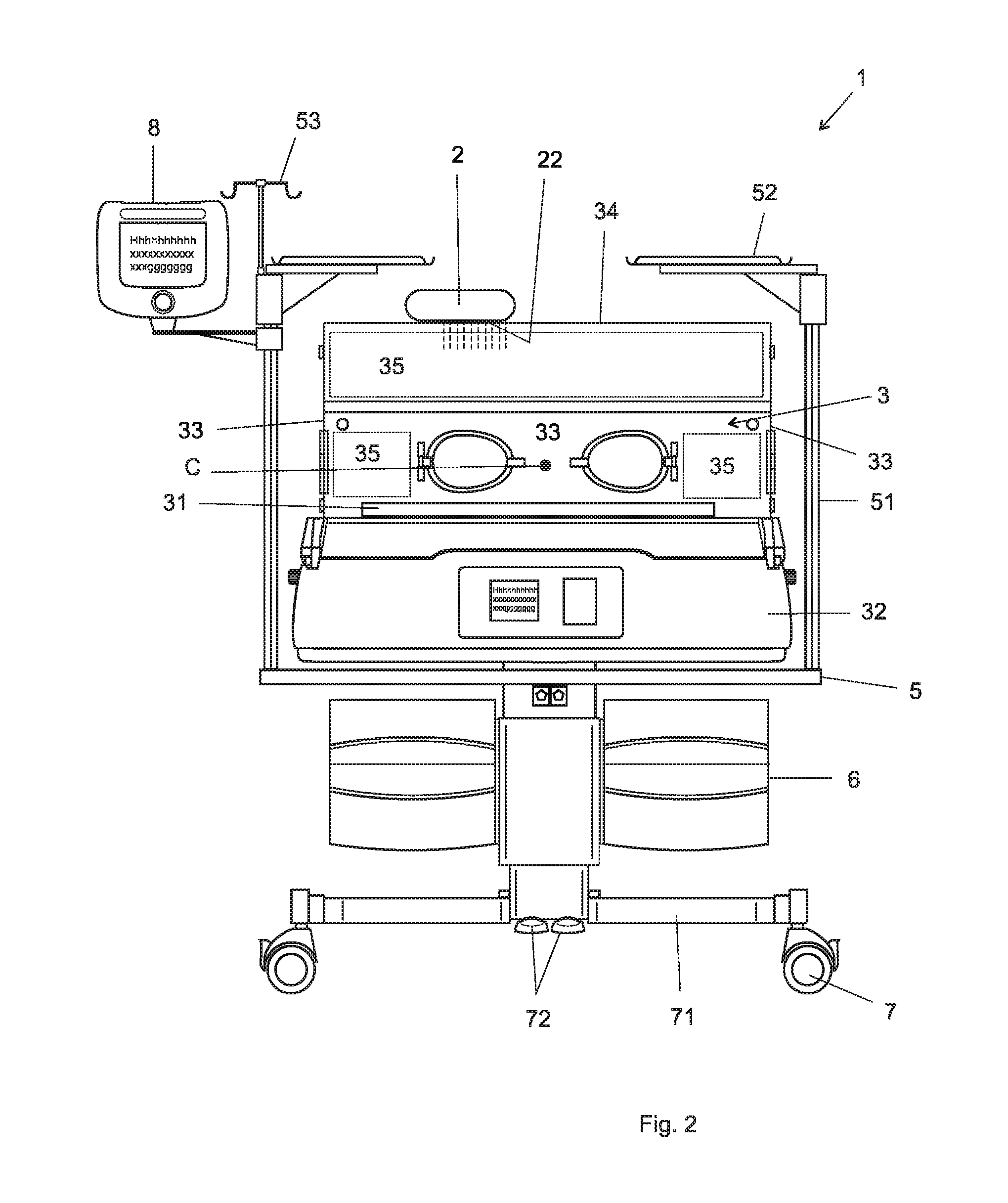Over 50% of newly-borns suffer from
jaundice, whether premature or not, and this normally occurs because the hepatic functions of a newly-born are not sufficiently developed immediately after birth.
Therefore, when the quantity of
bilirubin in the
blood stream reaches high levels, the still immature liver of the newly-born has difficulty in capturing the entire concentration of the
pigment and, consequently, it does not excrete the bile in the same proportion, generating an increase of its
reabsorption by the intestine, as well as the increase of
bilirubin in the blood—or hyperbilirubinemia, as this organic dysfunction is technically called.
Failure to observe suitable technical criteria for the use of phototherapy, such as the constant measuring of the
irradiance emitted by the
light source, may adversely affect the quality of the treatment offered to the jaundiced newly-born.
However, studies carried out by professionals from the field of
neonatology show that it is commonplace to find one or more lamps burned out in phototherapy equipment, particularly in public hospitals.
Yet, during their lives, such lamps have a different deterioration of their rendition of visible light, as the consumption of each lamp is linked to its manufacturing process, material, type,
coating and working parameter.
In addition, the low
irradiance emitted by the phototherapy equipment becomes of greater concern when considering that this same irradiance, already deficient on account of the wear of the
potency of the lamps, is even greater faced with
fogging conditions of the internal cabin of the incubator, which sometimes occurs in an intense manner.
Subtherapeutic doses, that is, lower than that recommended, result from deficient treatment, implying the
prolongation of hospitalization of the patient and the risks of decline of the clinical picture.
The apparatus that is not monitored in terms of irradiance may have scant influence on the clinical status of the newly-born and, consequently, prolong its hospitalization time.
In addition, it must be considered that a prolonged period of the patient inside the incubator also results in drawbacks for the hospital, in that the incubator is not available to treat other infants.
In addition, it demands greater consumption of energy and monetary cost.
Studies show that the
fogging of the walls and / or of the dome of the incubator, caused by the temperature shock on these surfaces, diminishes the effectiveness of the irradiance emitted by the phototherapy equipment and that effectively reaches the newly-born in phototherapy.
In addition, fogging also prevents complete
visualization of the newly-born isolated inside the cabin, meaning treatment may be hampered, and, in some drastic situations, jeopardize its safety.
Generally, fogging results from the
system (passive or active) of humidification incorporated by the internal cabin of the incubator.
The
humidity inside the internal cabin generates a build-up of water droplets that condense when in contact with colder surfaces (the walls and the dome of the incubator), and the accumulation of cooled vapor on these surfaces is what causes fogging.
Using cleaning cloths to demist the internal cabin of the incubator creates a means of proliferation for countless micro-organisms that are particularly harmful to the health of a newly-born.
The hospital market has, in this regard, cleaning cloths manufactured with
antiseptic materials which, though guaranteeing long duration of the
bacteriostatic agent on the cloth itself, do not protect the surfaces to be cleaned by the bactericide action.
It is worth noting that the heated, lit and humidified environment inside an incubator is significantly prone to the proliferation of germs and
bacteria, so such cleaning method might jeopardize the life of the newly-born.
Although the improvements introduced in the incubators belonging to the state of the art prove the well-known concern in the search for a technology which tries to control fogging promoted by humidification of the internal cabin, no solution found thus far has been capable of maintaining complete
visualization of the newly-born and suitable and sufficient amounts of irradiance emitted by the phototherapy equipment which effectively reaches it without, in doing so, the effectiveness of one of the systems being adversely affected by the activity of the other.
 Login to View More
Login to View More  Login to View More
Login to View More 


